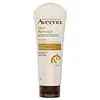What's inside
What's inside
 Key Ingredients
Key Ingredients

 Benefits
Benefits

 Concerns
Concerns

No concerns
 Ingredients Side-by-side
Ingredients Side-by-side

Water
Skin ConditioningCellulose
AbsorbentCocamidopropyl Betaine
CleansingGlycerin
HumectantGluconolactone
Skin ConditioningNiacinamide
SmoothingSodium Chloride
MaskingXanthan Gum
EmulsifyingAvena Sativa Kernel Flour
AbrasiveSodium Benzoate
MaskingCitric Acid
BufferingSodium Hydroxide
BufferingMicrocrystalline Cellulose
AbsorbentCarrageenan
CI 77491
Cosmetic ColorantCI 77492
Cosmetic ColorantCI 18820
Cosmetic ColorantWater
Skin ConditioningCellulose
AbsorbentButylene Glycol
HumectantBambusa Arundinacea Stem Powder
AbrasivePolyglyceryl-4 Caprate
EmulsifyingCaprylyl Glycol
EmollientCarbomer
Emulsion StabilisingEthylhexylglycerin
Skin ConditioningTrehalose
HumectantTromethamine
BufferingProtease
ExfoliatingDisodium EDTA
Caprylic/Capric Triglyceride
MaskingXylitylglucoside
HumectantAnhydroxylitol
HumectantSalix Alba Bark Extract
AstringentXylitol
HumectantSaccharomyces/Xylinum/Black Tea Ferment
Skin ConditioningHibiscus Sabdariffa Flower Extract
Skin ConditioningGlycerin
HumectantGlucose
HumectantGluconolactone
Skin ConditioningBrassica Oleracea Italica Extract
AstringentBrassica Oleracea Capitata Leaf Extract
Skin ConditioningMedicago Sativa Extract
TonicNicotinoyl Dipeptide-23
Skin ConditioningTriticum Vulgare Germ Extract
Skin ConditioningRaphanus Sativus Seed Extract
Skin ConditioningBrassica Napus Extract
Skin ConditioningArginine
MaskingTropolone
Skin ConditioningEryngium Maritimum Callus Culture Filtrate
Skin Conditioning1,2-Hexanediol
Skin ConditioningWater, Cellulose, Butylene Glycol, Bambusa Arundinacea Stem Powder, Polyglyceryl-4 Caprate, Caprylyl Glycol, Carbomer, Ethylhexylglycerin, Trehalose, Tromethamine, Protease, Disodium EDTA, Caprylic/Capric Triglyceride, Xylitylglucoside, Anhydroxylitol, Salix Alba Bark Extract, Xylitol, Saccharomyces/Xylinum/Black Tea Ferment, Hibiscus Sabdariffa Flower Extract, Glycerin, Glucose, Gluconolactone, Brassica Oleracea Italica Extract, Brassica Oleracea Capitata Leaf Extract, Medicago Sativa Extract, Nicotinoyl Dipeptide-23, Triticum Vulgare Germ Extract, Raphanus Sativus Seed Extract, Brassica Napus Extract, Arginine, Tropolone, Eryngium Maritimum Callus Culture Filtrate, 1,2-Hexanediol
 Reviews
Reviews

Ingredients Explained
These ingredients are found in both products.
Ingredients higher up in an ingredient list are typically present in a larger amount.
Cellulose is the main component of plant cell walls. It is used as an emulsifier, absorbent, and texture enhancer.
This ingredient has many functions:
Fun fact: Cellulose is the most abundant form of organic polymer on Earth.
Learn more about CelluloseGluconolactone is a PHA. PHAs are a great gentle alternative to traditional AHAs.
When applied, Gluconolactone has the same affect on skin as AHAs such as lactic acid. It helps dissolve the dead skin cells in the top layer of your skin. This improves texture and brightens the skin.
PHAs are more gentle than AHAs due to their larger structure. They do not penetrate as deeply as AHAs and take a longer time to dissolve dead cells. Studies show PHAs do not cause as much irritation.
Gluconolactone has some interesting properties:
In a 2004 study, Gluconolactone was found to prevent UV damage in mouse skin cells and has not been found to increase sun sensitivity. However, we still recommend wearing SPF daily.
This ingredient is is an created by reacting gluconic acid with an alcohol.
Learn more about GluconolactoneGlycerin is already naturally found in your skin. It helps moisturize and protect your skin.
A study from 2016 found glycerin to be more effective as a humectant than AHAs and hyaluronic acid.
As a humectant, it helps the skin stay hydrated by pulling moisture to your skin. The low molecular weight of glycerin allows it to pull moisture into the deeper layers of your skin.
Hydrated skin improves your skin barrier; Your skin barrier helps protect against irritants and bacteria.
Glycerin has also been found to have antimicrobial and antiviral properties. Due to these properties, glycerin is often used in wound and burn treatments.
In cosmetics, glycerin is usually derived from plants such as soybean or palm. However, it can also be sourced from animals, such as tallow or animal fat.
This ingredient is organic, colorless, odorless, and non-toxic.
Glycerin is the name for this ingredient in American English. British English uses Glycerol/Glycerine.
Learn more about GlycerinWater. It's the most common cosmetic ingredient of all. You'll usually see it at the top of ingredient lists, meaning that it makes up the largest part of the product.
So why is it so popular? Water most often acts as a solvent - this means that it helps dissolve other ingredients into the formulation.
You'll also recognize water as that liquid we all need to stay alive. If you see this, drink a glass of water. Stay hydrated!
Learn more about Water